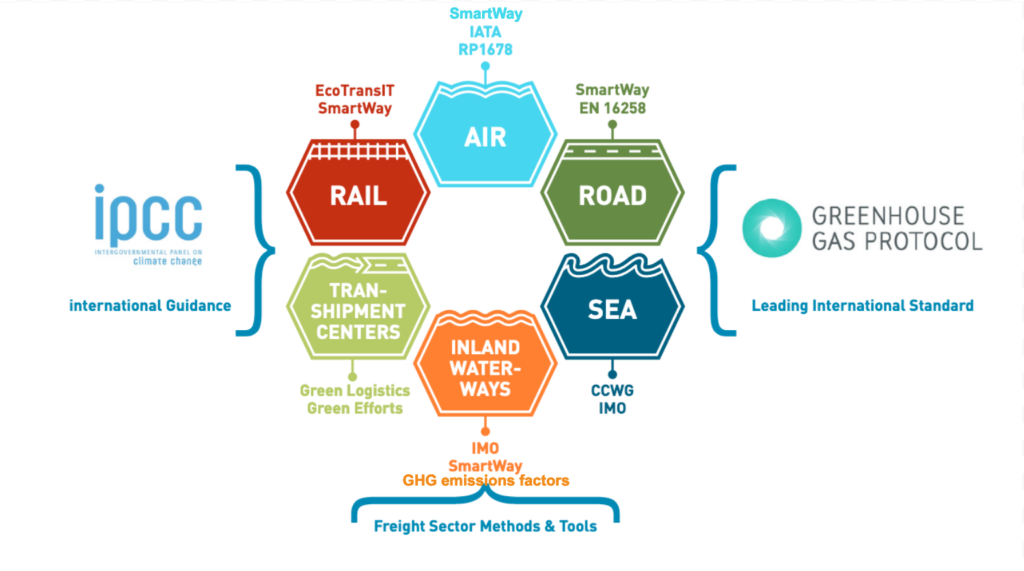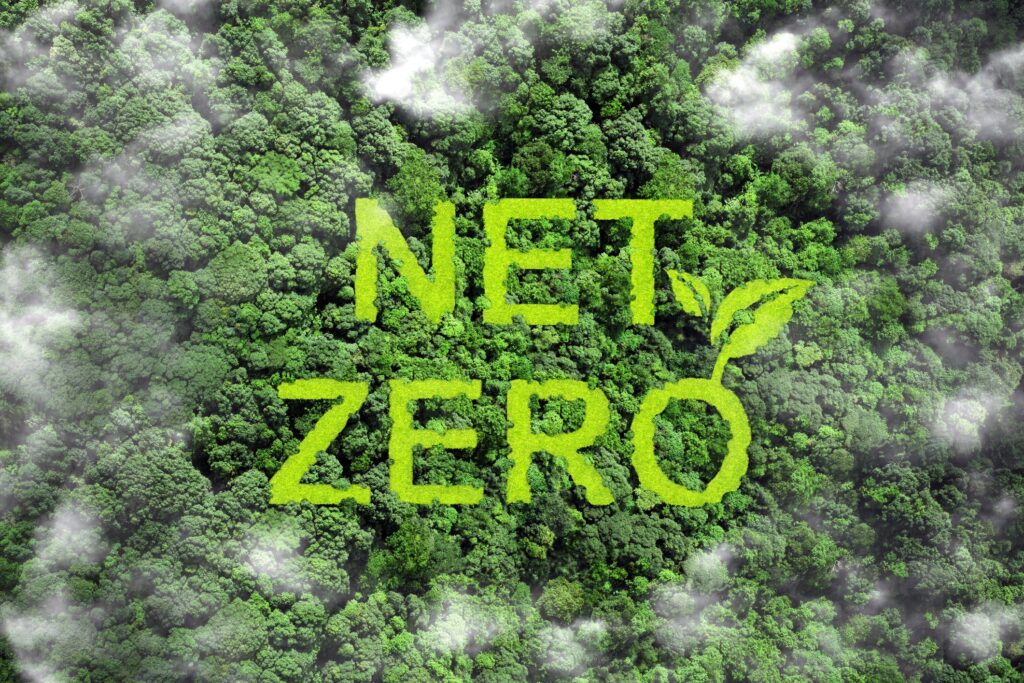As we look toward the future, the freight transport industry will see changes driven by economic growth. By the year 2050, experts anticipate a tripling in demand for freight transport, which will bring more challenges with respect to the global goals of sustainability and reducing greenhouse gas emissions.
When the Smart Freight Centre (SFC) was established in 2013, its purpose was to encourage more action to reduce global freight transportation’s carbon emissions. With that goal, the SFC created the Global Logistics Emissions Council (GLEC) Framework, specifically to help companies get on the right path in calculating and reporting their logistics emissions.
With Demand Expected to Grow, The Problem Becomes Clear
In the U.S., the transportation sector is the largest contributor to greenhouse gas (GHG) emissions, at 28%. While other sectors may be gaining ground by decreasing their reliance on fossil fuels, the transport sector remains heavily dependent. There is an urgent need for sustainable innovations and solutions globally within the industry, particularly in light of the anticipated growth in freight transport demand.
These trends and projections underscore the need for resources like the GLEC Framework for logistics emissions to give companies a straightforward way to calculate, report, and mitigate emissions within their operations.
GLEC: Addressing Emissions for Dynamic Supply Chains
As an initiative of the Smart Freight Centre, the GLEC Framework exists to create a globally harmonized, manageable approach to logistics emissions accounting. Accredited by the Greenhouse Gas Protocol, it aligns with numerous existing methodologies and industry standards, for example, the International Maritime Organization Energy Efficiency Operational Indicator for ocean freight.
The GLEC framework was introduced as version 1.0 in 2016. The SFC released an updated version 2.0 in 2019 to fill in gaps of the previous version and simplify the explanation of methodology and implementation steps, making it easier to use. It was not designed to be a formal standard, but in 2023, it helped create the international standard ISO 14083 for greenhouse gases, establishing the quantifying and reporting of greenhouse gas emissions from transport chain operations. This standard can potentially drive the adoption of principles within the GLEC Framework.
What is Included in the GLEC Framework?
There are two concepts addressed within the GLEC Framework. The first is the three scopes of emissions defined by the Greenhouse Gas Protocol—Scope 1 being for direct emissions from an organization’s own activities; Scope 2 for indirect emissions from purchased electricity, heating, cooling, and steam; and Scope 3 for other indirect emissions from the organization’s value chain, which typically includes logistics and transportation. The second concept is the idea of well-to-wheel emissions, representing the total emissions from fuel extraction (well-to-tank) to its utilization (tank-to-wheel). This approach means companies can account for the complete carbon footprint of their logistics operations.
Calculating Carbon Emissions
The GLEC Framework next lays out three steps for calculating carbon emissions:
Step 1: Setting boundaries and goals
- Create a boundary
- Plan based on end goals
- Determine data needs
Step 2: Calculating Scope 1 & 2 emissions
- Find fuel and electricity data
- Convert fuel to GHGs
- Convert electricity to GHGs
Step 3: Calculating Scope 3 emissions
- Calculate metric ton-kms
- Find fuel efficiency or emissions intensity factors
- Convert metric ton-kms to GHGs
Step 3 is the most complex for many companies, as Scope 3 emissions have intricate weight, distance, and metric ton-kilometers calculations. The GLEC Framework strives to bring clarity to this process.
The calculation of Scope 3 emissions may use three forms of data: primary data, modeled data, and default fuel or emissions data, which are correlated to the transport activity and stated in metric ton-kilometers. What is needed first is fuel efficiency or emission intensity factors. Then, using one of these factors, actual activity data can be converted to emissions.
Lastly, the GLEC Framework outlines reporting using two key performance indicators: the total emissions value that shows the overall impact and the emission intensity value that links emissions to the activity level. The key to progress is to reduce emission intensity, even if total emissions rise due to business growth.
The GLEC Framework also acknowledges important components to going beyond the data and affecting change:
- Setting targets
- Using carbon as a KPI
- Developing a reduction plan
- Leveraging sales and procurement
- Advocating for policy
This proactive and all-encompassing approach to emissions management means that more businesses are going beyond just reporting and making meaningful progress in reducing their environmental impact.
GLEC Offers a Reliable Standard in a Changing World
The GLEC Framework is a step in the right direction for the transportation and logistics industry, encouraging progress toward sustainability.
The framework helps businesses measure their emissions and compare them against industry standards to gauge where they stand with their sustainability efforts. This can be a spark that gives momentum to companies just getting started and encourages continued progress for others. The framework can even serve as a common language for collaboration and sharing best practices for reducing emissions. Companies can more easily identify areas within their operations where they should target their efforts, for example, using certain vehicles and carriers, transportation routes, and processes. When disclosed publicly, increased transparency into a company’s environmental impact helps build trust with stakeholders and customers.
GLEC Provides a Roadmap for Tomorrow’s Sustainable Supply Chain
Businesses are thinking ahead to upcoming regulations and the stricter requirements they must comply with in the near future. With the GLEC framework, companies can ensure their operations align with targets for reducing greenhouse gas emissions and prove their progress through reporting. They can adopt greener practices like optimizing shipment routes, working with providers that use more efficient vehicles, consolidating shipments, or making other logistical changes, from large pivots to minor adjustments.
Accurate data and the right tools to support decisions are at the core of meaningful carbon reduction. The GLEC Framework serves as a way to build a roadmap to understand operational impacts on the environment and take effective action toward sustainability. With precise and complete data on every scope of operations and knowledge of how to use and apply it, companies can put this into the lens of their goals and make fully informed and strategic decisions.
Reliable Compliance Begins with the Right Partner
The GLEC Framework uses a cake-baking analogy to explain how those in leadership positions can take the wide scope of information it covers and choose how to take action.
If a person needs a cake baked, most people can figure out how to make it themselves. They could use a reliable recipe, find the right ingredients, devote some time, and end up with a cake. Like a recipe, the GLEC Framework provides step-by-step guidelines and explanations of what companies need to track and reduce emissions effectively.
On the other hand, a person could hire a professional baker to save time, bring experience, and ensure quality. A credible baker will bake a cake according to requirements. Similarly, hiring a professional with a thorough understanding of the GLEC Framework can implement it to the specific circumstances of a business.
With both scenarios, the successful application of the GLEC Framework depends on the ability to follow the methodology, the quality of data used, and the ability to devote the time needed to reach the end result. These are two ways to effectively assess a company’s emissions and use that toward reduction planning.
Rely on Greenabl to Navigate the GLEC Framework
Greenabl is this type of partner for businesses navigating the GLEC Framework, reducing emissions, and more, by offering expertise, solutions, and resources.
With a digital platform to support a holistic approach, Greenabl helps businesses understand and implement practical solutions that reduce supply chain emissions with minimal impact on their operations.
Greenabl’s approach enables businesses to confidently align their operational decisions with broader environmental goals, effectively navigating the path to sustainable logistics.
To learn more, get started with a call with Greenabl today.


